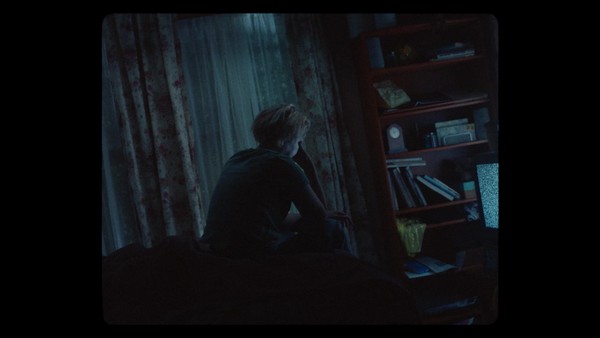Pharma > Disease Awareness & Understanding
BEFORE THEY FALL
FINGERPAINT, Pennsylvania / TEVA PHARMACEUTICALS / 2021


Overview
Credits
OVERVIEW
Write a short summary of what happens in the film.
A young woman tosses in her sleep. She mindlessly flips TV channels. She reads, trying to pass the time. She lies in bed, staring at the ceiling, when suddenly she begins to fall.
In a classroom, she struggles to concentrate. The words from a lesson projected on-screen start to rearrange themselves. She glances to see if anyone notices this.
We fall into a hardware store. The young woman stares at the security camera above her. A cluster of TV screens all show her face. Her eyes dart from screen to screen, paranoid.
In her kitchen now, she swirls with delusion, her mind racing uncontrollably.
In an inpatient ward, she stares blankly at a TV. The nurse turns it off, and…
The young woman falls helplessly through a void.
A call to action appears, urging psychiatrists to take early, comprehensive action to prevent the decline they’ve just witnessed.
Tell the jury anything relevant about the cinematography.
Every single cinematography choice was made to bring audiences closer to the lived experience of psychosis.
We chose to transition from scene to scene by craning downward, using a literal “falling camera” as our core technique for expressing this narrative of decline. And we used many other shot types—from handheld to SnorriCam—to convey the feeling of a world constantly in flux, since patients struggle to find stability when symptoms are uncontrolled.
Isolation is a defining feature of this illness, so we chose a claustrophobic 4:3 aspect ratio to help audiences feel it. And we shot our hero mostly in closeups with shallow depth of field to visually isolate her from her environments. These repeated closeups foreground the human impact of schizophrenia, not its clinical symptoms.
All these techniques were carefully chosen to portray our hero as a person who is suffering and in need of better care.
Describe any restrictions or regulations regarding Healthcare/RX/Pharma communications in your country/region including:
This work was reviewed throughout development by our client’s PARC committee, an internal team of medical, legal, and regulatory advisors. They ensured our film made no mention, representation, or suggestion of any specific drug or drug class, per the latest draft guidance from the FDA on disease awareness communications.
Describe the target audience and why your work is relevant to them.
Our target audience for this work is practicing psychiatrists in the United States. The film and its message are relevant to these specific healthcare professionals because they are actively treating schizophrenia patients in a variety of care settings, including private practice, inpatient units, and community mental health clinics.
More Entries from Regulated in Pharma
24 items
More Entries from FINGERPAINT
24 items












